The Influence Innovation Has on the Visual Appearance and Aesthetic Preference of Architectural Products
Abstract
1. Introduction
- How do respondents evaluate the innovativeness of a product?
- Does the aesthetic preference of a product depend on its innovative appearance?
2. Theoretical Background
2.1. Overview of Aesthetic Experience
2.2. Overview of Aesthetic Preference
2.3. Aesthetics and Innovation
3. Methods
3.1. Participants
3.2. Procedures
3.3. Stimuli
3.4. Variables
3.5. Statistical Analysis
4. Results
4.1. Description of the Sample
4.2. Checking the Assumptions of Multiple Regression
4.2.1. Multicollinearity
4.2.2. Outliers, Normality, Linearity, Homoscedasticity, Independent of Residuals
4.3. Model Evaluation
4.4. Variable Evaluation
4.5. Significance
4.6. Unstandardised Coefficients
4.7. Standardised Coefficients
5. Discussion
5.1. Theoretical Implications
5.1.1. Innovation and Aesthetic Preference
5.1.2. Innovation and Aesthetic Experience
5.1.3. Aesthetics and functionality
5.2. Practical Implications
6. Conclusions
7. Limitations and Future Research
Author Contributions
Funding
Institutional Review Board Statement
Informed Consent Statement
Data Availability Statement
Acknowledgments
Conflicts of Interest
References
- Hekkert, P.; Leder, H. Product Aesthetics. In Product Experience; Schifferstein, H.N.J., Hekkert, P., Eds.; Elsevier: San Diego, CA, USA, 2008; pp. 259–285. [Google Scholar]
- Ceballos, L.M.; Hodges, N.; Watchravesringkan, K. Consumer preference and apparel products: Investigating the role of the Centrality of Visual Product Aesthetics concept. Int. J. Fash. Des. Technol. Educ. 2021, 14, 325–337. [Google Scholar] [CrossRef]
- Bloch, P.H. Seeking the ideal form: Product design and consumer response. J. Mark. 1995, 59, 16–29. [Google Scholar] [CrossRef]
- Garber, L., Jr.; Burke, R.R.; Jones, J.M. The Role of Package Color in Consumer Purchase Consideration and Choice; Marketing Science Institute: Cambridge, MA, USA, 2000. [Google Scholar]
- Veryzer, R.W., Jr. The Place of Product Design and Aesthetics in Consumer Research. In Advances in Consumer Research; Kardes, F.R., Provo, M.S., Eds.; UT: Association for Consumer Research NA: Seattle, WA, USA, 1995; Volume 22, pp. 614–645. [Google Scholar]
- Creusen, M.E.H.; Schoormans, J.P.L. The Different Roles of Product Appearance in Consumer Choice. J. Prod. Innov. Manag. 2005, 22, 63–81. [Google Scholar] [CrossRef]
- Bamossy, G.; Scammon, D.L.; Johnston, M. A Preliminary Investigation of the Reliability and Validity of an Aesthetic Judgment Test. In Advances in Consumer Research; Bagozzi, R.P., Tybout, A.M., Eds.; Association for Consumer Research: Ann Arbor, MI, USA, 1983; pp. 685–690. [Google Scholar]
- Holbrook, M.B. Some Preliminary Notes on Research in Consumer Esthetics. In NA-Advances in Consumer Research; Olson, J.C., Ed.; Association for Consumer Research: Ann Arbor, MI, USA, 1980; Volume 7, pp. 104–108. [Google Scholar]
- Crilly, N. Product Aesthetics: Representing Designer Intent and Consumer Response. Ph.D. Thesis, University of Cambridge, London, UK, 2005. Available online: https://dl.icdst.org/pdfs/files/52725a8fcd239b24698050ed22a5f343.pdf (accessed on 9 August 2022).
- Desmet, P.M.A.; Hekkert, P. Framework of product experience. Int. J. Des. 2007, 1, 57–66. [Google Scholar]
- Leder, H.; Nadal, M. Ten years of a model of aesthetic appreciation and aesthetic judgments: The aesthetic episode—Developments and challenges in empirical aesthetics. Br. J. Psychol. 2014, 105, 443–464. [Google Scholar] [CrossRef]
- Berlyne, D.E. Aesthetics and Psychobiology; Appleton-Century-Crofts: New York, NY, USA, 1971. [Google Scholar]
- Graf, L.K.M.; Landwehr, J.R. Aesthetic pleasure versus aesthetic interest: The two routes to aesthetic liking. Front. Psychol. 2017, 8, 1–15. [Google Scholar] [CrossRef]
- Reber, R.; Schwarz, N.; Winkielman, P. Processing fluency and aesthetic pleasure: Is beauty in the perceiver’s processing experience? Personal. Soc. Psychol. Rev. 2004, 8, 364–382. [Google Scholar] [CrossRef]
- Landwehr, J.R.; Labroo, A.A.; Herrmann, A. Gut liking for the ordinary: Incorporating design fluency improves automobile sales forecasts. Mark. Sci. 2011, 30, 416–429. [Google Scholar] [CrossRef]
- Hekkert, P.; Snelders, D.; van Wieringen, P.C. Most advanced, yet acceptable: Typicality and novelty as joint predictors of aesthetic preference in industrial design. Br. J. Psychol. 2003, 9, 111–124. [Google Scholar] [CrossRef]
- Godoe, H. Innovation theory, aesthetics, and science of the artificial after Herbert Simon. J. Knowl. Econ. 2012, 3, 372–388. [Google Scholar] [CrossRef]
- Leder, H.; Carbon, C.C. Dimensions in Appreciation of Car Interior Design. Appl. Cogn. Psychol. 2005, 19, 603–618. [Google Scholar] [CrossRef]
- Person, O.; Snelders, D. Initial Findings on Design and Product Category Expertise in Aesthetic Evaluation. In Proceedings of the 4th Nordic Design Research Conference, Helsinki, Finland, 29–31 May 2011; pp. 1–5. [Google Scholar]
- Creusen, M.E.H.; Snelders, D. Visual typicality and novelty as joint predictors of aesthetic preference: The influence of design expertise and product category interest. In E-European Advances in Consumer Research; Bradshaw, A., Hackley, C., Maclaran, P., Eds.; Association for Consumer Research: Duluth, MN, USA, 2011; Volume 9, pp. 528–529. [Google Scholar]
- Cheung, M.C.; Law, D.; Yip, J.; Wong, C. Emotional Responses to Visual Art and Commercial Stimuli: Implications for Creativity and Aesthetics. Front. Psychol. 2019, 10, 1–10. [Google Scholar] [CrossRef] [PubMed]
- Van Geert, E.; Wagemans, J. Order, Complexity, and Aesthetic Appreciation. Psychol. Aesthet. Creat. Arts 2020, 14, 1–20. [Google Scholar] [CrossRef]
- Luck, S.J.; Vogel, E. The capacity of visual working memory for features and conjunctions. Nature 1997, 309, 279–281. [Google Scholar] [CrossRef] [PubMed]
- Alvarez, G.A.; Cavanagh, P. The capacity of visual short term memory is set both by visual information load and by number of objects. Psychol. Sci. 2004, 15, 106–111. [Google Scholar] [CrossRef] [PubMed]
- Eng, H.Y.; Chen, D.; Jiang, Y. Visual working memory for simple and complex visual stimuli. Psychon. Bull. Rev. 2005, 12, 1127–1133. [Google Scholar] [CrossRef] [PubMed]
- Palmer, S.E.; Schloss, K.B.; Sammartino, J. Visual aesthetics and human preference. Annu. Rev. Psychol. 2013, 64, 77–107. [Google Scholar] [CrossRef]
- Leder, H.; Belke, B.; Oeberst, A.; Augustin, D. A model of aesthetic appreciation and aesthetic judgments. Br. J. Psychol. 2004, 95, 489–508. [Google Scholar] [CrossRef]
- Verhavert, S.; Wagemans, J.; Augustin, M.D. Beauty in the blink of an eye: The time course of aesthetic experiences. Br. J. Psychol. 2018, 109, 63–84. [Google Scholar] [CrossRef] [PubMed]
- Markovic, S. Components of aesthetic experience: Aesthetic fascination, aesthetic appraisal, and aesthetic emotion. I-Perception 2012, 3, 1–17. [Google Scholar] [CrossRef]
- Locher, P.J. The Aesthetic Experience with Visual Art at First Glance. In Investigations into the Phenomenology and the Ontology of the Work of Art; Springer: Cham, Switzerland, 2015; pp. 75–88. [Google Scholar] [CrossRef]
- Hekkert, P. Design aesthetics: Principles of pleasure in design. Psychol. Sci. 2006, 48, 157–172. [Google Scholar]
- Silvia, P.J.; Barona, C.M. Do People Prefer Curved Objects? Angularity, Expertise, and Aesthetic Preference. Empir. Stud. Arts 2009, 27, 25–42. [Google Scholar] [CrossRef]
- Bar, M.; Neta, M. Humans prefer curved visual objects. Psychol. Sci. 2006, 17, 645–648. [Google Scholar] [CrossRef]
- Silvera, D.H.; Josephs, R.A.; Giesler, R.B. Bigger Is Better: The Influence of Physical Size on Aesthetic Preference Judgments. J. Behav. Decis. Mak. 2002, 15, 189–202. [Google Scholar] [CrossRef]
- Mugge, R.; Schoormans, J.P.L. Product design and apparent usability. The influence of novelty in product appearance. Appl. Ergon. 2012, 43, 1081–1088. [Google Scholar] [CrossRef]
- Stoneman, P. Soft innovation: Changes in product aesthetics and aesthetic products. In Proceedings of the Royal Economic Society Annual Conference, Coventry, UK, 17–19 March 2008. [Google Scholar]
- OECD. The Measurement of Scientific and Technological Activities: Proposed Guidelines for Collecting and Interpreting Technological Innovation Data, 3rd ed.; Commission Eurostat: Paris, France, 2006. [Google Scholar]
- Postrel, V. The Substance of Style: How the Rise of Aesthetic Value Is Remaking Commerce, Culture, and Consciousness; HarperCollins: New York, NY, USA, 2004. [Google Scholar]
- Swan, K.S.; Kotabe, M.; Allred, B.B. Exploring Robust Design Capabilities: Their Role in Creating Global Products, and Their Relationship to Firm Performance. J. Prod. Innov. Manag. 2005, 22, 144–164. [Google Scholar] [CrossRef]
- Alcaide-Marzal, J.; Tortajada-Esparza, E. Innovation Assessment in Traditional Industries: A Proposal of Aesthetic Innovation Indicators. Scientometrics 2007, 72, 33–57. [Google Scholar] [CrossRef]
- Pallant, J. SPSS Survival Manual: A Step by Step Guide to Data Analysis Using SPSS, 3rd ed.; Allen & Unwin: Crows Nest, NSW, Australia, 2007. [Google Scholar]
- Tabachnick, B.G.; Fidell, L.S. Using Multivariate Statistics; Pearson Education: Boston, MA, USA, 2007. [Google Scholar]
- Goode, M.R.; Dahl, D.W.; Moreau, C.P. Innovation aesthetics: The relationship between category cues, categorisation certainty, and newness perceptions. J. Prod. Innov. Manag. 2013, 30, 192–208. [Google Scholar] [CrossRef]
- Berlyne, D.E. Studies in the New Experimental Aesthetics; Wiley: New York, NY, USA, 1974. [Google Scholar]
- Frith, C.D.; Nias, D.K.B. What determines aesthetic preferences? J. Gen. Psychol. 1974, 91, 163–173. [Google Scholar]
- Ulrich, K.T. Design: Creation of Artifacts in Society. 2011. Available online: https://ssrn.com/abstract=1951106 (accessed on 2 August 2022).
- Mata, M.P.; Ahmed-Kristensen, S.; Shea, K. Implementation of design rules for perception into a tool for three-dimensional shape generation using a shape grammar and a parametric model. J. Mech. Des. 2018, 141, 011101. [Google Scholar] [CrossRef]
- Rindova, V.; Petkova, A. When Is a New Thing a Good Thing? Technological Change, Product Form Design, and Perceptions of Value for Product Innovations. Organ. Sci. 2007, 18, 217–232. [Google Scholar] [CrossRef]
- Homburg, C.; Schwemmle, M.; Kuehnl, C. New product design: Concept, measurement, and consequences. J. Mark. 2015, 79, 41–56. [Google Scholar] [CrossRef]
- Haug, A. A framework for the experience of product aesthetics. Des. J. 2016, 19, 809–826. [Google Scholar] [CrossRef]
- Han, J.; Forbes, H.; Schaefer, D. An exploration of how creativity, functionality, and aesthetics are related in design. Res. Eng. Des. 2021, 32, 289–307. [Google Scholar] [CrossRef]
- Gourville, J.T. Eager sellers stony buyers: Understanding the psychology of new product adoption. Harv. Bus. Rev. 2006, 84, 98–106. [Google Scholar]
- Bloch, P.H.; Brunel, F.F.; Arnold, T.J. Individual differences in the centrality of visual product aesthetics: Concept and measurement. J. Consum. Res. 2003, 29, 551–565. [Google Scholar] [CrossRef]
- Page, C.; Herr, P.M. An investigation of the processes by which product design and brand strength interact to determine initial affect and quality judgments. J. Consum. Psychol. 2002, 12, 133–147. [Google Scholar] [CrossRef]
- Csikszentmihalyi, M.; Robinson, R.E. The Art of Seeing; J. Paul Getty Museum: Malibu, CA, USA, 1990. [Google Scholar]

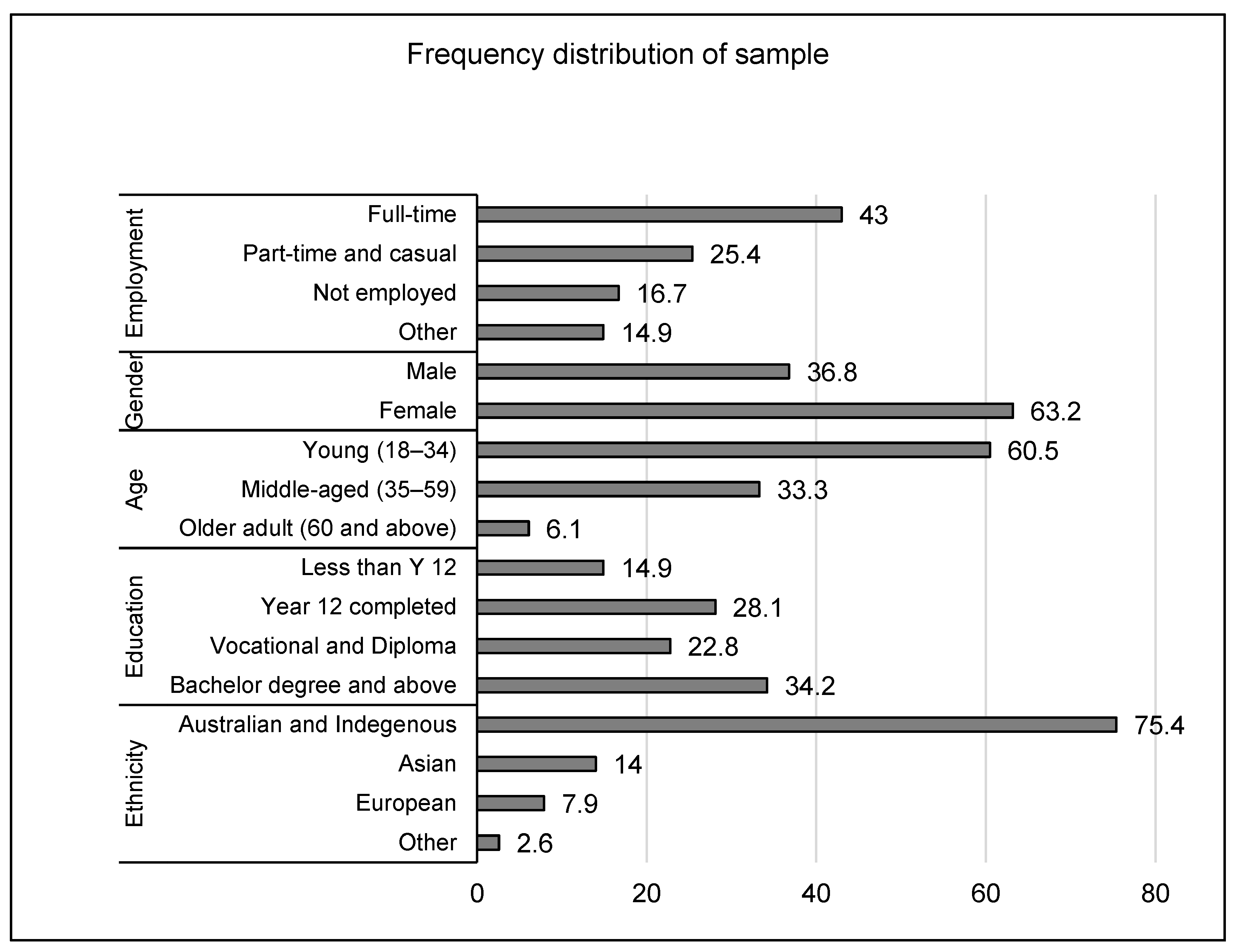
| Variable | Definition | Description |
|---|---|---|
| Overall aesthetic preference | Dependent variable | Cognitive and affective response to timber joints |
| Innovative | Independent variable | The joint appears novel and aesthetically preferred |
| Long-lasting | Control variable Visual properties of the stimuli (timber joints) in the study | Joint appears durable and will last for a long time |
| Functional | Joint appears that it is designed to be practical and useful rather than purely attractive | |
| Strong | Joint appears that it is able to withstand force, pressure, and/or wear |
| Model Summary b | ANOVA | |||||
|---|---|---|---|---|---|---|
| Joint | Variance Explained a (R Square) | df | F | Significance | ||
| 1 | 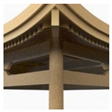 | 46.1% | Regression | 4 | 23.31 | <0.001 |
| Residual | 109 | |||||
| 2 | 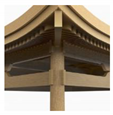 | 55.0% | Regression | 4 | 33.35 | <0.001 |
| Residual | 109 | |||||
| 3 | 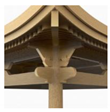 | 46.1% | Regression | 4 | 23.31 | <0.001 |
| Residual | 109 | |||||
| 4 | 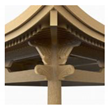 | 52.9% | Regression | 4 | 30.57 | <0.001 |
| Residual | 109 | |||||
| 5 | 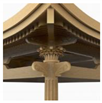 | 51.3% | Regression | 4 | 28.68 | <0.001 |
| Residual | 109 | |||||
| Joint | Visual Appearance | B | Beta | Sig | Part | |
|---|---|---|---|---|---|---|
| 1 | 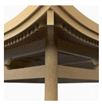 | Strong | 0.187 | 0.207 | 0.095 | 0.118 |
| Functional | 0.071 | 0.074 | 0.547 | 0.042 | ||
| Long-lasting | 0.121 | 0.127 | 0.205 | 0.090 | ||
| Innovative | 0.347 | 0.390 | <0.001 | 0.308 | ||
| 2 |  | Strong | −0.078 | -0.070 | 0.588 | −0.035 |
| Functional | 0.287 | 0.218 | 0.071 | 0.117 | ||
| Long-lasting | 0.407 | 0.325 | 0.002 | 0.203 | ||
| Innovative | 0.408 | 0.363 | <0.001 | 0.253 | ||
| 3 | 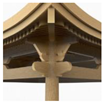 | Strong | 0.187 | 0.207 | 0.095 | 0.118 |
| Functional | 0.071 | 0.074 | 0.547 | 0.042 | ||
| Long-lasting | 0.121 | 0.127 | 0.205 | 0.090 | ||
| Innovative | 0.347 | 0.390 | <0.001 | 0.308 | ||
| 4 | 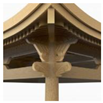 | Strong | 0.000 | 0.000 | 0.998 | 0.000 |
| Functional | 0.433 | 0.392 | <0.001 | 0.225 | ||
| Long-lasting | 0.119 | 0.112 | 0.372 | 0.059 | ||
| Innovative | 0.330 | 0.305 | 0.001 | 0.216 | ||
| 5 | 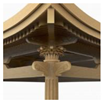 | Strong | 0.293 | 0.263 | 0.032 | 0.145 |
| Functional | 0.119 | 0.104 | 0.365 | 0.061 | ||
| Long-lasting | −0.031 | −0.028 | 0.818 | −0.015 | ||
| Innovative | 0.483 | 0.469 | <0.001 | 0.334 | ||
| Joint | Visual Appearance (Standardised Beta Coefficients) | |
|---|---|---|
| 1 | 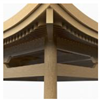 |  |
| 2 | 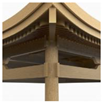 |  |
| 3 |  | 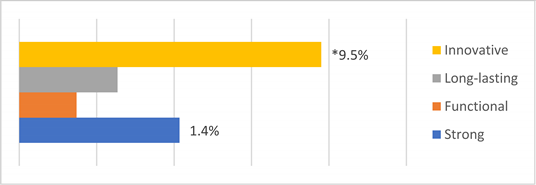 |
| 4 | 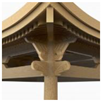 |  |
| 5 | 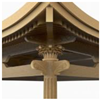 |  |
Disclaimer/Publisher’s Note: The statements, opinions and data contained in all publications are solely those of the individual author(s) and contributor(s) and not of MDPI and/or the editor(s). MDPI and/or the editor(s) disclaim responsibility for any injury to people or property resulting from any ideas, methods, instructions or products referred to in the content. |
© 2022 by the authors. Licensee MDPI, Basel, Switzerland. This article is an open access article distributed under the terms and conditions of the Creative Commons Attribution (CC BY) license (https://creativecommons.org/licenses/by/4.0/).
Share and Cite
Mridha, M.; Kuys, B.; Suhaimi, S.N. The Influence Innovation Has on the Visual Appearance and Aesthetic Preference of Architectural Products. Buildings 2023, 13, 19. https://doi.org/10.3390/buildings13010019
Mridha M, Kuys B, Suhaimi SN. The Influence Innovation Has on the Visual Appearance and Aesthetic Preference of Architectural Products. Buildings. 2023; 13(1):19. https://doi.org/10.3390/buildings13010019
Chicago/Turabian StyleMridha, Mozammel, Blair Kuys, and Safia Najwa Suhaimi. 2023. "The Influence Innovation Has on the Visual Appearance and Aesthetic Preference of Architectural Products" Buildings 13, no. 1: 19. https://doi.org/10.3390/buildings13010019
APA StyleMridha, M., Kuys, B., & Suhaimi, S. N. (2023). The Influence Innovation Has on the Visual Appearance and Aesthetic Preference of Architectural Products. Buildings, 13(1), 19. https://doi.org/10.3390/buildings13010019








